#Facebook Custom Audiences Guide
Explore tagged Tumblr posts
Text
A Step-by-Step Guide to Creating Custom Audiences on Facebook and Instagram Ads

Why Use Custom Audiences?
Custom audiences allow you to focus your ad spend on people most likely to interact with your brand. By creating targeted segments, you can deliver relevant content that resonates with each unique group. Custom audiences on Facebook and Instagram can be crafted from a variety of sources, such as website visitors, app users, or customers who engage with your social media profiles.
With our SMM services in Pune, we help businesses utilize Facebook Custom Audiences and Instagram Ad Audience Targeting to drive better results and enhance SMM Services strategies.
Types of Custom Audiences
Custom audiences on Facebook and Instagram can be divided into four main types:
Website Traffic: Target users who have visited your website or specific pages on it. This type of audience is ideal for retargeting campaigns.
App Activity: Focus on users who have interacted with your app, completed certain actions, or shown high engagement.
Customer List: Import customer information like email addresses and phone numbers to reach existing customers or subscribers.
Engagement: Target users who have engaged with your Facebook or Instagram page or posts, such as those who have liked, commented, shared, or saved your content.
Step 1: Accessing the Custom Audiences Tool
To get started, open Facebook Ads Manager and navigate to the Audiences section. Select Create Audience and choose Custom Audience from the dropdown. This will open options for building your audience based on various data sources.
Step 2: Select Your Data Source
Choose a data source for your custom audience. Facebook provides several options:
Website Traffic: This requires setting up the Facebook Pixel on your website. Once installed, the pixel will track user activity on your website, enabling you to retarget users on Facebook and Instagram based on their actions.
App Activity: If you have an app, you can link it to Facebook and create audiences based on user interactions within the app. This is particularly useful for app-based businesses looking to increase user engagement.
Customer List: You can upload a customer list (email addresses, phone numbers) directly into Facebook Ads Manager. Facebook will match this information with its database, creating an audience of people already familiar with your brand.
Engagement: Select Facebook or Instagram engagement to target users who have interacted with your social media content. Engagement can include video views, likes, comments, shares, or saved posts. This audience is highly valuable for retargeting campaigns.
Step 3: Define Audience Rules and Parameters
Once you’ve selected your source, you’ll be prompted to define parameters for the audience. Here’s how to set these up:
Website Traffic: You can target all visitors or those who visited specific pages. Set the retention period to define how long visitors stay in this audience, which can be between 1 and 180 days.
Customer List: Make sure to upload data securely and accurately. Facebook will only use it for matching purposes.
Engagement: Define what constitutes engagement. For example, if you’re retargeting based on Instagram Ad Audience Targeting, you might choose users who liked or commented on recent posts.
Step 4: Refine the Audience with Demographic Filters
Facebook allows further refinement by adding demographic, location, and interest-based filters. For example, if your target market is in Pune, you can restrict your audience to users in this region. This is ideal for SMM Services in Pune looking to build a Facebook Custom Audiences Guide focused on specific areas.
Step 5: Save and Name Your Audience
After setting up your custom audience, name it for easy reference. A clear name, such as “Website Visitors Last 30 Days,” helps keep your campaigns organized, especially if you’re managing multiple custom audiences.
Step 6: Utilize Custom Audiences in Ad Campaigns
To use your custom audience, open Ads Manager, create a new ad campaign, and select Audience. Here, choose the custom audience you just created. This ensures your ad content reaches users who have previously interacted with your brand, increasing the likelihood of conversions and positive engagement.
Step 7: Use Lookalike Audiences for Expansion
Custom audiences can also be used to create Lookalike Audiences. A lookalike audience is a group of users with similar characteristics to your custom audience, helping you reach new people likely to be interested in your brand. Set the similarity level (from 1% to 10%), with 1% being the most closely matched audience.
Benefits of Using Custom Audiences in Facebook and Instagram Ads
Better ROI: By focusing ad spend on users likely to convert, you save budget while achieving higher engagement.
Enhanced Retargeting: Custom audiences enable you to reach users who are already familiar with your brand, keeping your business top of mind.
Improved Relevance: Tailor your messaging to each audience type for personalized ad experiences that resonate with users.
Conclusion
Building Facebook Custom Audiences and Instagram Ad Audience Targeting strategies is essential for businesses looking to optimize their social media advertising efforts. By following this step-by-step guide, you can effectively target and engage users, enhancing your brand’s visibility and reach. Whether you’re a local business seeking SMM Services in Pune or a global company, custom audiences can provide a powerful edge in your digital marketing strategy.
#SMM services in pune#SMM Services#Facebook Custom Audiences Guide#Instagram Ad Audience Targeting#Build Facebook & Instagram Audiences
0 notes
Text
Business Guide:
How to get started
When you have a business name in mind look up the domain name to see if it’s taken. You don’t want to spend money on an LLC just to find out that your name is taken. Thats a waste of money because you also have to pay to dissolve it.
If the name is not taken, great, don’t file an LLC yet. Go online and get a virtual business address. Why? If you’re running your business out of your home like I am, just know that it’s public information if you use your address to file your LLC. A virtual address should cost like $10-$20 a month. Use that to file your LLC.
Once you’ve filed that LLC get your Ein. That’s your Employee Identification Number. It’s your businesses tax id. It’s free to file on the IRS website. Don’t fall for the scam websites you guys.
Once you’ve gotten your EIN go to Google domains and get your website name aswell as 3-4 emails. An email for your social media accounts, an executive email for yourself, an [email protected] for things like your business bank account, Shopify account, etc; and maybe a customer support email. I use the social email as a customer support email. All of this should be like $50/month.
Once you’ve don’t that get on Canva and make that logo bookie. Personally I paid someone on Fiverr to make mine because I’m a “soft business life” kind of girl and I’d rather pay the professionals. Thats just me though.
Once you’ve got your logo go ahead and get them social media accounts going. Instagram, tiktok, Facebook.
Alright now this is where it gets specific to clothing brands because that’s what I own.
Time to find a manufacturer. Head over to alibaba and search what kind of product you want to sell. Be sure to add “oem” if you want a manufacturer that customizes. Look for the amount of orders they’ve gotten on that product. If it says zero orders that’s ok. Some styles are new and thus haven’t been ordered yet. Check any reviews they have for other products. Also check the total revenue they’ve done. It’s on the store profile. I can’t tell you what the sweet spot is yet bc I’ve only used one manufacturer so far but I’d look for mid six figures and up if you wanna be real safe.
Chat with them and order a sample. Even if you buy from a vendor list you’ll need your own sample to make content with. I suggest buying one and first. It’s worth the wait because if you buy multiple and end up not liking them you’d have wasted money that could’ve gone into testing a different manufacturer.
Do not launch with more than 2 products. Even 2 is a stretch, wallai start with one.
This is because if you’re doing the preorder, which I suggest, you’ll be depending on customer orders to pay for the bulk order. Manufacturers do their moq by color or style. If you have too many options in your website and customers order a mix of things, you better pray you have enough money to cover the bulk for all those different styles. Stay safe and give them 1-2 options to choose from.
Pre order method is great if you don’t have a lot of cash to start with because the orders pay for themselves. Bulk orders start to wrack up. Especially if it’s a custom style or material. You don’t want to break the bank for something that might not sell.
Once you’ve gotten and approved your samples choose a launch date. 2-3 weeks before that launch dates post consistently. At least once a day but remember quality over quantity. Now don’t be tricked. Quality doesn’t mean a full cinematography. It means connecting with your audience and relating with them to a point where they’re like “this business gets it”. Either that or attaching yourself to an identity they want to have. “It girl ig influencer”, “feminine soft life babe” “clean girl Pilates princess” whatever the fuck it is embody ur as best as you can. When customers attach your product with an identity that is aspirational to them they will buy it without rationalizing. It’s why the luxury market makes so much off of ppl who can’t afford to buy it twice.
Focus on the backend
If you have a goal of getting an influx of orders and making a lot of sales, be sure that your business is structured in a way that can handle it happening at any given time. You know those tiktok businesses that get one viral video and sell out over night? That could be you but if you’re not prepared ppl are going to be upset. I suggest working backwards:
A customer service platform/inbox so that you can answer them right away with frequently asked questions.
Have stock so that you have something for customers to buy once they finally land on your website.
Have a well presenting website so that ppl don’t think you’re a scam. I’m going to do a post on this bc some of these business websites drive me fuckin nuts. Color theory ppl, color theory.
A social media page with some kind of social proof ie reviews from customers in some way shape or form. Ppl are going to be looking for what others have to say about your brand. Hire UGC creators to make videos that you can post on your page. They’re cheaper than influencers but still know how to convey the message well. You’ll have to have extra samples and items on hand to send them. Also check out their usage rights. Some will allow you to use their videos in ads but you have to pay extra and it’s only for a certain amount of time. But if they do it right, you’ll get a great return. Scared money don’t make no money.
A social media page that shows the products in movement and different lighting. I need to be able to imagine myself in the item before I buy it. Where would I wear it, how will it fit on me. Even when I’ve already ordered something I stay going back to the businesses social media page just to see the clothes again. I might even search it up to see other ppl wearing it.
Packaging
No need to go crazy with the packaging in the beginning. Don’t get me wrong, branding is important but as a beginner you may not have the money for that yet. You need to focus on spending money on what will give you the best return. Just get regular poly mailers from Amazon in your brand colors. You’ll also need:
A stack of 6x4 shipping labels
A thermal printer
A scale
When your manufacturer sends you the clothes they will most likely be in their own little bags. If not you can get those from Amazon too.
Later on you can go to alibaba and find a manufacturer to print you custom poly mailers for that extra edge. Put your logo, a cute message, and your social media handles on the bag and that’s it. Good to go.
You can also design your own thank you cards as well. I won’t be doing that.
Little things to remember
Don’t feel like you have to keep up with big brands. You don’t need to launch something every two weeks. As a matter of fact I advise against emulating super fast fashion brands. I only launch a new item once the pre ordered items have been shipped out to customers.
Be nice to your customers. You’d think this was obvious but it’s not. Some ppl are rude, ghetto, and uncouth. If you hate authority and have a smart mouth I think you should either take a customer service course or hire a virtual assistant from the Philippines to do your customer service for you because no customers = no money.
I’ll update this as I learn and grow:
12/18/2023
Influencers
Not every influencer with a mass follower base is going to be your influencer. It’s possible that you pay $5000 for an influencer with 75k followers to post your product on her page but that post makes you less than $3k. That means you’ve net negative $2k. What a fuckin waste of money.
This is why it’s important to develop a persona for your brand. What is your brand identity? Who is your target audience? What are their psychographics?
Where do currently shop? What are there favorite social media apps?What is their race? Their age? Their ethnicity? Are they in college or highschool? Do they have parents that support their lifestyle or are they hustlers? Are they concerned about price or quality more? Are they married? Do they have children? Are they environmentally conscious?
You need to embody Joe Goldberg and peer at them through their window. Acquaint yourself with every part of their life.
Also, you might not be your target demographic yet and that’s ok. The girls that shop with my brand have social lives. They go out with their friends and need outfits to wear. I don’t have a social life. The only clothes I wear are my work clothes to go to work and my robe when I’m at home.Or a sweat set and a bonnet to run errands.
Don’t think to yourself “ I would never wear that.” “I would never buy something at that price point”. That’s fine cuz someone else will. A lot of people will.
Another thing is your demographic could change once you start your business. It might be that you create content that attracts a different type of person than what you originally planned and that’s cool too. We don’t live in a perfect world. As long as they’re close enough to what you had predetermined it’s ok. Sometimes our business comes out different than we hoped but it’s just as good if not better. It’s like child. Don’t destroy its greatness trying to turn it into something it doesn’t want to be.
User generated content
Love, love, love her down. She’s that sweet spot between making content yourself and having an influencer with a large following make the content for you. UGC is a form of social proof which is something you need for an e-commerce brand especially. Ppl can’t just pop into your store and try on your stuff so they need the opinions of “regular” people to sell them on it. They want to see that person try it on, do a close up of the fabric, wear it to a social setting, etc;
What I like about UGC is that I can pick someone who fits into my brand persona to represent my brand even if I don’t. Someone that appears aspirational but still relatable. Like I said previously, you yourself might not embody your brands persona but you can pay someone who does.
A little translate for yall: I do not live in a nice apartment. My room is small, and dark, and filled with boxes. My living room has mix matched decor and I myself am not the body type I’d like to be (pls don’t hit me with body positivity babe). What I can do is pay a girl with the opposite of all those things and knows how to sell a product.
I have a girl right now that I’ve inquired to make posts for me and she’s got it all. Her rate for one video is $100 with an extra $30 for 90 days of usage in ads. $100 is the new 50 and for the return I’ll get on her, THATS A STEAL.
If you need to find a UGC creator search it up on tiktok and Twitter. Most of them have a portfolio of past work they’ve done. If you feel like they match your brands vibes, keep their info for when you’re ready.
I suggest to have a roster of them because if ppl keep seeing the same person over and over, the thought that that person is just a regular degular customer leaves their mind and you lose the magic of UGC.
Update 12/21/2023
I’ve been sick but yall ain’t paying me so it’s ok. Here’s the update.
Website
Your website is your home babe and when you’re preparing for guest you can’t have your home looking any type of way. Not only does it need to be clean but it needs to be cohesive and inviting.
You know how many times I’ve opened someone’s booking page on Instagram and I click off. Not only am I not reading through all of that small ass text but my head hurts cuz you’ve got a black font on a hot pink background.
Some of yalls websites to not comply with accessibility guidelines so pay attention to that bc you can be sued. Ppl should be able to read what you have on there without getting a headache.
Good rule of thumb is to have one primary color, and then black and white. Don’t over complicate it. Your primary color will be your logo, think twitters blue, then your secondary colors should be black and white, for your text. You might have an accent color like gold or silver, this should be used sparingly for a little dazzle.
If you’re a clothing brand like me, keep the text short and sweet. Think about it, when you go shopping on your favorite website are you bombarded with a soliloquy on how the collection came to be? And even if you are do you stop and read the whole thing? I don’t bc I don’t care. That’s what your Instagram story is for.
All I want to see is the attention grabber and a short,but convincing, tagline.
Example: Ski Resort 2023-“Stun the slopes and stand out on the ski lift with best sellers spotted at St. Moritz”
Let you images tell the rest of the story.
Don’t overwhelm them with options
Guys this is so important. The more options ppl see the less they buy or the less likely they are to buy. Why? This is the thought process.
“Omg the stuff on this website is so cute! Let me go through their catalog and add to my cart as I go”
5 minutes of scrolling
“Ok I have too many things in my cart let me just save to a wishlist instead”
Another 5 minutes of scrolling
“Ok I’ll just stop here and go back to my cart and decide what I’m going to get rn”
Goes to cart
Spends 10 minutes deciding what she’s gonna get bc there’s so many good options
Takes 10 items out of her cart and only buys two basics bc she knows those are less likely to disappoint.
And scene
That is if she didn’t leave after the second five minutes of scrolling. Nowadays five minutes on a non stimulating website is a lot, don’t let it take that long.
Obviously this also depends on the customers budget. Some people have the money to just buy everything in their cart (I wish- one day), but most are just window shopper you hope to convert with your nice styles, images, and prices. Don’t make it harder for people to give you their money.
I have more but I’m tired of writing so I’ll update yall tmrw.
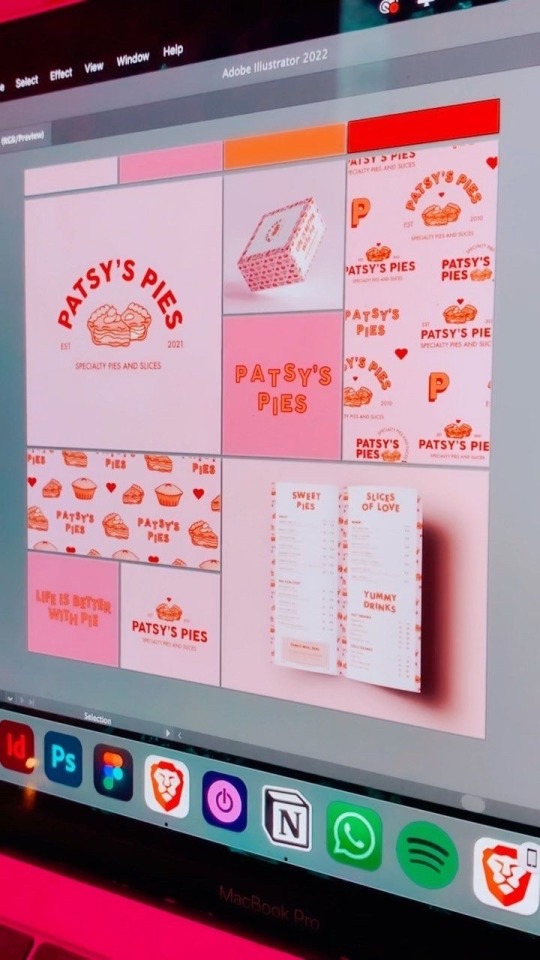





#level up#glow up#luxury#entrepreneur#spoiled heaux#blackgirlglowup#scaling business owner#confessions of a business owner
153 notes
·
View notes
Text
New Business Marketing Tips And Tricks for Success
Starting a new business can be an exciting endeavor, but it also comes with its fair share of challenges, especially in the competitive landscape of today's market. Effective marketing is crucial for the success of any new venture. Here are four essential marketing tips and tricks to help your new business thrive.
Define Your Target Audience: Before diving into marketing efforts, it's essential to identify and understand your target audience. Define your ideal customer persona by considering demographics, interests, pain points, and buying behaviors. Conduct market research to gather valuable insights that will guide your marketing strategies. Tailoring your messages and campaigns to resonate with your target audience will significantly increase your chances of success.
Once you have a clear picture of your audience, choose the most suitable marketing channels to reach them effectively. Social media, email marketing, content marketing, and pay-per-click advertising are just a few options to consider. Your choice of channels should align with where your audience spends their time online.

Create Compelling Content: Content marketing is a powerful tool for new businesses to establish their brand and build credibility. Develop high-quality, informative, and engaging content that addresses the needs and interests of your target audience. This content can take various forms, including blog posts, videos, infographics, and podcasts.
Consistency is key when it comes to content creation. Develop a content calendar to plan and schedule regular updates. Providing valuable content not only helps you connect with your audience but also boosts your search engine rankings, making it easier for potential customers to find you.

Leverage Social Media: Social media platforms have become indispensable for marketing in today's digital age. Create profiles on relevant social media platforms and engage with your audience regularly. Share your content, interact with followers, and participate in industry-related discussions.
Paid advertising on social media can also be a cost-effective way to reach a broader audience. Platforms like Facebook, Instagram, and LinkedIn offer targeting options that allow you to reach users who match your ideal customer profile.

Monitor and Adapt: Marketing is an ever-evolving field, and what works today may not work tomorrow. To stay ahead of the curve, regularly monitor the performance of your marketing efforts. Analyze key metrics such as website traffic, conversion rates, and return on investment (ROI). Use tools like Google Analytics and social media insights to gather data and insights.
Based on your findings, be prepared to adapt your strategies and tactics. If a particular marketing channel isn't delivering the expected results, reallocate your resources to more promising avenues. Stay up-to-date with industry trends and keep an eye on your competitors to ensure your marketing efforts remain relevant and competitive.
In conclusion, effective marketing is essential for the success of any new business. By defining your target audience, creating compelling content, leveraging social media, and continuously monitoring and adapting your strategies, you can position your new business for growth and long-term success in a competitive market. Remember that success may not come overnight, but with persistence and the right marketing approach, your new business can thrive.

#business#digitalbusiness#digitalmarketing#seo#market analysis#data analytics#marketing#management#sales#learn digital marketing#Digital marketing course#seo expert#business success#businessgrowth
86 notes
·
View notes
Text
Unlocking Success: The Best Use of Facebook Marketing
In the dynamic landscape of digital marketing, Facebook remains a powerhouse for businesses seeking to connect with their target audience and drive results. With over 2.8 billion monthly active users, Facebook offers an unparalleled platform for businesses to enhance brand visibility, engage with customers, and boost sales. Here's a comprehensive guide on the best use of Facebook marketing to maximize your business potential:

1. Create a Compelling Business Page:
Your Facebook business page is the digital face of your brand. Ensure it's visually appealing, consistent with your brand identity, and includes essential information such as your business hours,

contact details, and a compelling 'About Us' section. Use high-quality images and a captivating cover photo to make a lasting first impression.
2. Leverage Facebook Ads:
Facebook's robust advertising platform allows businesses to target specific demographics, interests, and behaviors. Invest time in creating eye-catching ad creatives, compelling copy, and a clear call-to-action.
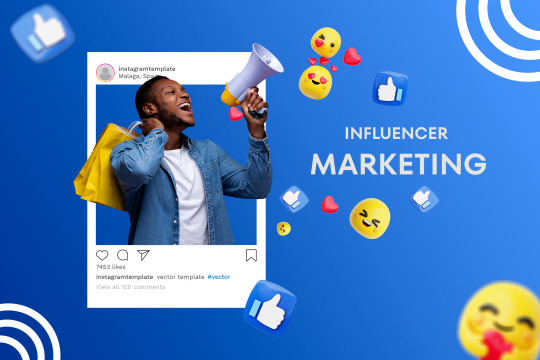
Experiment with different ad formats, such as carousel ads, video ads, and lead ads, to find what resonates best with your audience.
3. Engage with Your Audience:
Social media is all about building relationships. Regularly engage with your audience through comments, messages, and posts. Promptly respond to inquiries, address concerns, and foster a sense of community. Encourage user-generated content by running contests or asking for reviews, turning your audience into brand ambassadors.
4. Utilize Facebook Groups:
Facebook Groups provide a unique opportunity to create a community around your brand or industry. Join relevant groups and participate in discussions, positioning yourself as an authority in your niche. Alternatively, create your own group to foster a sense of belonging among your customers and prospects.
5. Harness the Power of Facebook Analytics:
Facebook Insights offers valuable data on your page performance, audience demographics, and content engagement.

Use these insights to refine your strategy, identify popular content, and optimize your posting schedule. Data-driven decisions are key to a successful Facebook marketing campaign.
6. Optimize for Mobile Users:
A significant portion of Facebook users access the platform on mobile devices. Ensure that your content is mobile-friendly, with concise and visually appealing elements. This includes mobile-optimized ads, responsive landing pages, and a seamless user experience.
7. Implement Facebook Pixel:
Facebook Pixel is a powerful tool that helps you track the actions users take on your website after clicking on your ads. Use this data to measure the effectiveness of your campaigns, retarget website visitors, and optimize for conversions. Facebook Pixel is an invaluable asset for refining your marketing strategy.
8. Run Targeted Contests and Giveaways:
Engage your audience by running contests and giveaways. Encourage participants to like, share, and comment on your posts to increase organic reach. Ensure that the prizes align with your brand and attract your target audience, fostering a positive association with your business.
9. Stay Consistent with Content Strategy:
Consistency is key in maintaining an active and engaged audience. Develop a content calendar and post regularly to keep your audience informed and entertained.

Mix up your content types, including images, videos, articles, and user-generated content, to maintain variety.
10. Test and Iterate:
The digital landscape is ever-evolving, and what works today may not work tomorrow. Continuously test different strategies, analyze results, and iterate based on the feedback and data you receive. This iterative approach will help you stay ahead of the curve and adapt to changing consumer behavior.
#digital marketing#online marketing#seo services#marketing agency#seo expert#seo marketing#best digital marketing agency#facebook marketing#facebook ad agency services#facebook ads#facebook advertising
26 notes
·
View notes
Text
Unleashing the Power of Facebook Marketing: Rapid Brand Growth in a Short Time
In the dynamic world of digital marketing, leveraging the potential of social media platforms is paramount for achieving rapid brand growth. Among the myriad options available, Facebook stands out as a powerhouse for marketers.

With its vast user base and robust advertising tools, Facebook provides an unparalleled opportunity to connect with a massive audience and propel your brand to new heights in a short time. Here's a comprehensive guide on the best use of Facebook marketing to achieve rapid brand success:
1. Define Your Objectives:
Clearly outline your marketing objectives, whether it's increasing brand awareness, driving website traffic, or boosting sales.

Having well-defined goals will guide your Facebook marketing strategy and help measure success.
2. Create a Compelling Page:
Craft an engaging and professional Facebook Page that reflects your brand identity. Use high-quality visuals, a captivating cover photo, and a concise yet informative bio. Regularly update your page with relevant content to keep your audience engaged.
3. Leverage Facebook Ads:
Facebook's advertising platform is a game-changer. Invest in well-targeted ads to reach your specific audience.
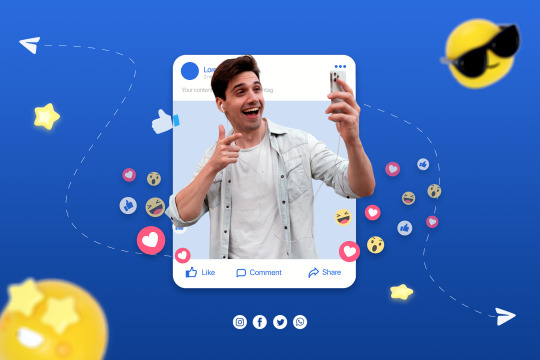
Utilize Facebook's powerful targeting options, including demographics, interests, and behaviors, to ensure your ads are seen by the right people.
4. Engaging Content Strategy:
Develop a content strategy that resonates with your target audience. Create a mix of visually appealing images, engaging videos, and informative posts. Consistency is key – post regularly to maintain a strong online presence.
5. Harness the Power of Video:
Video content is highly engaging on Facebook. Create compelling videos that showcase your products or services.

Share behind-the-scenes glimpses of your brand, and tell stories that connect with your audience emotionally.
6. Run Contests and Giveaways:
Encourage user participation through contests and giveaways. This not only increases engagement but also expands your brand's reach as participants share your content with their networks.
7. Utilize Facebook Groups:
Join or create Facebook Groups relevant to your industry. Engage with group members by providing valuable insights, answering questions, and subtly promoting your brand. Be genuine and build relationships within the community.

8. Responsive Customer Service:
Use Facebook Messenger to offer prompt and personalized customer service. Respond to messages quickly, address customer inquiries, and resolve issues. A positive interaction can turn a customer into a brand advocate.
9. Track and Analyze Performance:
Regularly monitor the performance of your Facebook marketing efforts. Utilize Facebook Insights to track metrics such as reach, engagement, and conversions. Adjust your strategy based on the data to optimize results.
10. Collaborate with Influencers:
Partnering with influencers can significantly amplify your brand's reach. Identify influencers relevant to your niche and collaborate on sponsored content or product reviews to tap into their audience.
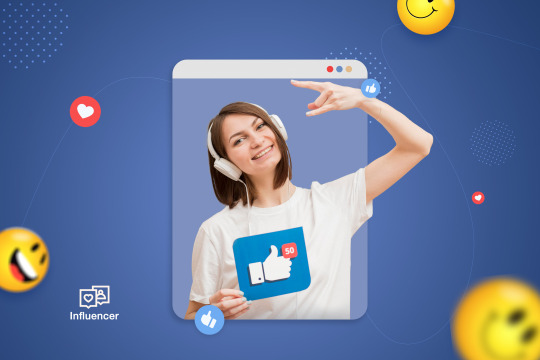
In conclusion, Facebook marketing is a potent tool for achieving rapid brand growth. By strategically implementing these tips, you can create a robust presence, engage with your target audience, and drive tangible results in a short period. Embrace the versatility of Facebook's marketing tools, stay agile in your approach, and watch your brand soar to new heights in the digital landscape.
#digital marketing course#online marketing#digitalmarketing#digital marketing#seo#learn digital marketing#marketing agency#digital marketing service#seo expert#seo marketing#facebook marketing#facebook ads#facebook advertising#facebook ad agency services#facebook post#whatsapp#influencers#social media
12 notes
·
View notes
Text
Lead Generation for E-commerce: Tactics to Drive Online Sales
Article by Jonathan Bomser | CEO | AccountSend.com
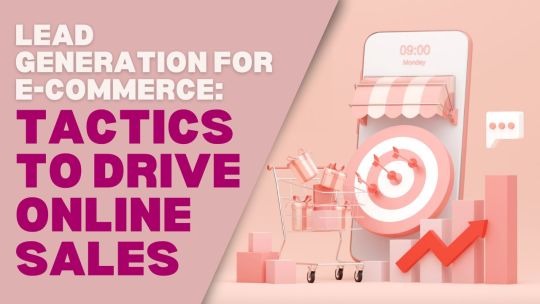
In today's dynamic digital landscape, the world of e-commerce is thriving like never before, offering businesses unparalleled opportunities to connect with a global audience. However, within this digital marketplace, the pursuit of increased online sales comes with its unique set of challenges. This is where the strategic art of lead generation steps in. In this article, we're about to embark on an enlightening journey through seven innovative tactics that promise to optimize your lead generation strategies and drive a remarkable surge in your online sales, setting the stage for business growth and expansion.
Download the infographic here!
Optimize Your Website for Conversions: Imagine your website as a virtual storefront, a welcoming entry point for potential customers into your digital universe. Ensuring that this first interaction is seamless and impactful is a crucial foundation for success. The concept of website optimization goes beyond aesthetics, diving deep into the realm of user experience. It's about strategically integrating compelling calls-to-action (CTAs), facilitating smooth checkout processes, and ensuring that your website is responsive and accessible across mobile devices. Each of these elements collaborates to create an environment that not only engages visitors but also fuels B2B lead generation, ultimately leading to increased conversions.
Implement SEO Best Practices: Navigating the vast expanse of the digital landscape requires a strategic compass. Search engine optimization (SEO) is that compass, guiding your brand towards higher visibility and discoverability. By refining your website and content to align with search engine algorithms, you pave a path for potential customers to easily find you. This journey involves meticulous keyword research, the cultivation of authoritative backlinks, and the crafting of top-notch content. Together, these elements elevate your brand's presence in search engine rankings, positioning you as an authority in your niche and drawing organic traffic to your virtual doorstep.
Harness the Power of Content Marketing: In a world driven by information and engagement, content marketing emerges as a beacon of connection. This dynamic strategy involves creating and disseminating valuable, relevant content that resonates with your target audience. From thought-provoking blog posts and visually captivating infographics to immersive videos and educational webinars, content marketing weaves a narrative that not only builds brand credibility but also educates potential leads. By serving as a bridge between information and conversion, content marketing shapes a customer journey that is both meaningful and impactful.
Leverage Social Media Advertising: In the realm of social media, where connections are forged and conversations thrive, lies an untapped reservoir of advertising potential. Platforms such as Facebook, Instagram, and LinkedIn offer a treasure trove of advertising options equipped with advanced targeting capabilities. These tools empower you to direct your messages towards potential customers based on their behaviors, preferences, and demographics. This laser-focused approach brings your brand to the forefront of your audience's attention, fostering recognition, trust, and ultimately, sales conversions.
youtube
Engage in Email Marketing: Amidst the whirlwind of digital advancements, email marketing remains a steadfast pillar in the lead generation landscape. It's the art of personalized communication, where each email serves as a conduit for tailored promotions, informative content, and the nurturing of leads. Cultivating a robust email list lays the foundation for strategic email campaigns, where the crafting of compelling content fosters a direct and intimate relationship between your brand and potential customers. This relationship, in turn, fuels conversions and drives your e-commerce success.
Partner with Influencers: The power of influence is a force to be reckoned with in the digital era. By collaborating with influencers who hold sway over your target audience, you unlock an avenue of amplified visibility and credibility. These influencers, with their engaged online following, introduce your brand to a wider audience, fostering trust and recognition. The partnership forms a symbiotic relationship, driving both your brand's growth and the influencer's engagement, a testament to the transformative potential of influencer marketing in e-commerce.
Use Retargeting Campaigns: In the intricate dance of e-commerce, not every lead converts immediately. This is where retargeting campaigns step in, reminding potential customers of their engagement with your brand. These campaigns strategically place ads on social media platforms or deliver timely email reminders, gently nurturing warm leads and guiding them towards conversion. By maintaining a consistent presence in their digital landscape, you increase the chances of converting engaged leads into loyal customers.
In summation, the realm of e-commerce lead generation is a symphony of strategies. From website optimization to content marketing, social media finesse, influencer collaboration, and the art of retargeting, each tactic plays a distinct role in enhancing lead generation, elevating conversion rates, and propelling your online sales to unprecedented heights. As you embark on this dynamic journey, remember that success lies in not just embracing these strategies but also in adapting them to the evolving e-commerce trends and the unique pulse of your business. Your commitment to continuous refinement and innovation will undoubtedly chart a course towards sustained e-commerce triumph.
#AccountSend#BusinessOwnersDatabase#VerifiedB2BEmails#B2BContactDatabase#CEOEmailAddresses#SalesLeadsDatabase#B2BEmailList#B2BLeadsDatabase#VerifiedBusinessLeads#B2BLeadsList#Youtube
21 notes
·
View notes
Text

Welcome to USA SMM Network – Your One-Stop Solution for Digital Marketing and Verified Accounts
We’re excited to introduce USA SMM Network, your comprehensive hub for digital marketing services tailored to help you succeed online. USA SMM Network goes beyond social media marketing to deliver a full range of services that drive real results for businesses and individuals alike. Whether you’re looking for SEO optimization, social media management, or verified account solutions, we’ve got you covered!
What We Offer
At USA SMM Network, we provide a suite of services that cover everything you need to grow your online presence:
Verified Accounts – We offer verified accounts for platforms like Wise (TransferWise), Coinbase, Revolut, Paxful, and Cash App, helping you access trusted payment solutions securely.
YouTube SEO Services – Looking to boost your YouTube channel’s visibility? Our targeted YouTube SEO services focus on increasing views, improving rankings, and growing subscribers.
Organic Facebook Marketing – Our organic marketing services help you reach your audience naturally, creating authentic engagement and boosting brand awareness on Facebook.
Monthly SEO Services – Consistent growth needs ongoing effort. Our monthly SEO plans ensure your website is optimized continuously for better visibility and rankings.
Why Choose USA SMM Network?
Trusted and Verified: We provide verified accounts with a focus on security and authenticity.
Full-Service Digital Marketing: USA SMM Network covers everything from SEO and social media to custom YouTube growth strategies.
Dedicated Support: Our team is here to guide you through every step, ensuring you get the best results from our services.
Get Started Today!
Visit USA SMM Network and explore how our services can help you take your digital marketing to the next level. We’re here to help you succeed and can’t wait to work together on your journey to online growth.
2 notes
·
View notes
Text
Facebook Marketing Guide: 9 Strategies to Succeed
In this article, we're going to touch on various Facebook marketing tactics you should employ within your overarching social media strategy, and how to get started.

How to create a Facebook marketing strategy
1. Set goals for your Facebook marketing
2. Know your Facebook audience
3. Publish a mix of content to your Facebook feed
4. Post when your followers are most active
5. Schedule your Facebook content
6. Engage proactively with your audience
7. Use Messenger to build relationships with customers
8. Track & analyze your results
8. Determine your Facebook ads strategy
Additional resources for Facebook Marketing
#marketing tips#marketing agency#entrepreneur#digital marketing#agency#social media#ecommerce#startup
12 notes
·
View notes
Text
How Digital Marketing Training Can Help You Start Your Own Business
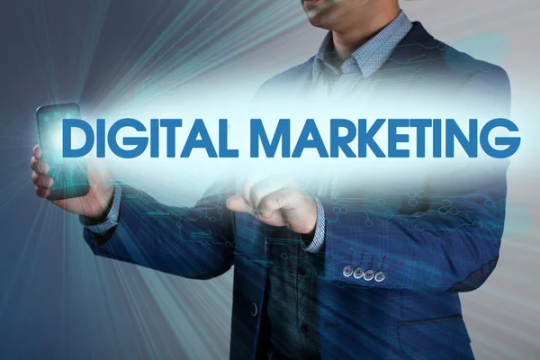
Starting your own business in today’s digital age means navigating a complex online landscape. Consumers are constantly engaging online, which means a strong digital presence is essential for any new business. However, understanding and mastering the tools and strategies required for effective digital marketing can be challenging without the right training. This is where a digital marketing training institute becomes invaluable. With the right digital marketing skills, you can drive your business's growth from the ground up.
In this guide, we’ll explore how digital marketing training can provide a solid foundation for launching a business. By examining core skills, tools, strategies, and expert tips, you’ll understand how digital marketing training can be a game-changer for entrepreneurs.
1. Building a Strong Online Presence
The first and most essential step in creating a successful business is establishing a credible online presence. Digital marketing training teaches you the importance of branding, website development, and content creation, helping you build a brand that resonates with your target audience.
Personal Branding: Training will help you identify your unique value proposition and communicate it effectively.
Website Development Basics: Many digital marketing training programs cover web development basics, helping you create a user-friendly, SEO-optimized website.
Content Creation: Content is the backbone of any digital strategy. Learning how to create engaging blog posts, videos, and infographics will attract and retain customers.
Expert Tip:
Use free tools like Canva for graphic design and WordPress or Wix for creating a basic website to get started.
2. Understanding SEO to Attract Organic Traffic
Search Engine Optimization (SEO) is crucial to ensure that your business can be found by potential customers. A digital marketing training institute will provide comprehensive knowledge on how SEO works, including keyword research, on-page SEO, and technical SEO aspects.
Keyword Research: Learn to identify and target keywords relevant to your business that your potential customers are searching for.
On-Page SEO: Training will cover techniques like optimizing titles, headers, and meta descriptions to improve search engine rankings.
Technical SEO: Advanced training may include aspects like website speed optimization, mobile compatibility, and sitemaps, which are essential for ranking well on search engines.
Expert Tip:
Tools like Ahrefs, SEMrush, and Google Keyword Planner can assist in finding and analyzing keywords to help you rank higher on search engines.
3. Utilizing Social Media to Build Brand Awareness
Social media platforms are powerful tools for promoting a business, but effective social media marketing requires strategy. Digital marketing training will teach you to create engaging content, understand analytics, and develop ad campaigns to increase reach.
Platform Selection: Training will help you determine which social media platforms align best with your target audience (e.g., LinkedIn for B2B or Instagram for younger demographics).
Content Strategy: You’ll learn how to craft posts that engage followers, tell your brand’s story, and drive interactions.
Advertising Campaigns: Learn how to use paid advertising effectively on platforms like Facebook, Instagram, and LinkedIn, helping you reach a wider audience at a relatively low cost.
Expert Tip:
Use scheduling tools like Hootsuite or Buffer to manage and track your social media posts, saving time and ensuring consistency.
4. Harnessing Email Marketing for Customer Retention
Email marketing is a highly effective channel for keeping customers engaged and building long-term loyalty. Through digital marketing training, you’ll understand the nuances of email marketing, from list building to crafting effective email campaigns.
Building an Email List: Learn strategies for collecting customer emails through website sign-ups, social media, and landing pages.
Crafting Email Campaigns: Training often covers how to write compelling emails, create drip campaigns, and send personalized messages.
Analyzing Email Performance: You’ll learn how to use analytics to measure open rates, click-through rates, and conversions, enabling you to refine your strategy.
Expert Tip:
Platforms like Mailchimp and Constant Contact are user-friendly options for beginners, offering templates, analytics, and automation options.
5. Leveraging Content Marketing to Educate and Engage
Content marketing is an excellent way to establish authority in your field and attract customers through valuable content. A digital marketing training institute will help you understand how to create a content calendar, generate relevant topics, and repurpose content across different channels.
Creating a Content Plan: Training will teach you to create a strategic plan that includes blog posts, videos, podcasts, and infographics.
SEO-Optimized Content: Learn how to structure content to rank well on search engines, helping your business attract organic traffic.
Repurposing Content: With guidance, you can maximize content by repurposing a blog post into social media snippets, videos, and newsletters.
Expert Tip:
Try using tools like Grammarly for proofreading and Yoast SEO to optimize content for SEO directly within WordPress.
6. Understanding Analytics to Make Data-Driven Decisions
Knowing how to interpret data is crucial for evaluating the success of your digital marketing efforts. Most digital marketing training programs include a module on analytics, focusing on metrics that matter most to new business owners.
Google Analytics: Learn how to track website performance, including visitor demographics, behavior, and traffic sources.
Social Media Analytics: Training will guide you on using platform-specific analytics to measure reach, engagement, and conversion on platforms like Facebook and Instagram.
Conversion Rate Optimization (CRO): Understand how to analyze conversion rates and make adjustments to improve customer acquisition.
Expert Tip:
Set up Google Analytics and Google Search Console from day one to monitor performance and make informed decisions based on real data.
7. Running Effective Digital Advertising Campaigns
Digital advertising can give new businesses an instant boost by reaching specific demographics. A digital marketing training program will teach you how to run effective campaigns on platforms like Google Ads, Facebook Ads, and LinkedIn Ads.
Creating Ad Campaigns: Training covers campaign structure, audience targeting, and budgeting.
Retargeting Ads: You’ll learn how to use retargeting to re-engage potential customers who have already visited your site.
Analyzing Ad Performance: Most programs cover ad metrics, allowing you to understand cost-per-click (CPC), conversion rates, and return on ad spend (ROAS).
Expert Tip:
When starting, allocate a small budget for A/B testing on platforms like Google Ads or Facebook Ads to determine what works best for your target audience.
8. Developing a Holistic Digital Marketing Strategy
A successful digital marketing strategy combines multiple channels and tactics to drive brand awareness and sales. Digital marketing training provides an understanding of how each marketing channel works together and teaches you how to develop an integrated strategy that aligns with your business goals.
Setting Goals and KPIs: Training will help you define measurable goals and key performance indicators (KPIs) to track progress.
Aligning Marketing Channels: You’ll learn to integrate SEO, social media, content, and paid ads into a cohesive strategy.
Tracking Progress and Adapting: Training emphasizes flexibility, encouraging you to continuously assess and adjust strategies based on results.
Expert Tip:
Tools like Trello or Asana can help you organize your marketing tasks, assign deadlines, and track progress effectively.
9. Gaining Industry Insights and Keeping Up with Trends
Digital marketing is constantly evolving. Enrolling in a digital marketing training institute helps you stay current on trends, tools, and best practices, which is essential for success in a competitive business landscape.
Industry Updates: Many training programs offer regular updates on industry trends, such as AI in marketing, voice search, and algorithm changes.
Networking Opportunities: Being part of a training institute often allows you to network with industry professionals, opening doors for partnerships, mentorships, and collaborations.
Access to Resources: Training institutes often provide access to exclusive resources like webinars, workshops, and case studies that keep you ahead of the curve.
Expert Tip:
Follow reputable sources like Search Engine Journal and HubSpot for regular industry updates and best practices.
Conclusion
Starting a business can be daunting, but with the right digital marketing training, you’ll have the tools and knowledge to succeed. A digital marketing training institute equips you with essential skills, from SEO and content creation to analytics and advertising, that can help drive growth for your new business. With guidance on creating a solid online presence, engaging with customers, and making data-driven decisions, digital marketing training is a valuable investment for aspiring entrepreneurs. By understanding and leveraging digital marketing strategies, you can position your business for success in a rapidly evolving digital landscape.
#digital marketing#search engine optimization#social media marketing#smm#search engine marketing#seo
2 notes
·
View notes
Text
What Is Paid Media Marketing? An Introduction for Beginners

In the fast-paced digital landscape, businesses are constantly seeking effective strategies to enhance their online presence and reach their target audience. Paid media marketing has emerged as a powerful tool to achieve these goals. This comprehensive introduction to paid media marketing will help beginners understand its fundamental concepts, benefits, and how to implement it effectively within their digital marketing strategy.
Understanding Paid Media Marketing
Paid media marketing refers to any form of digital advertising where businesses pay to have their content displayed on various platforms. This can include pay-per-click (PPC) advertising, social media ads, display ads, and more. Unlike organic marketing efforts, paid media provides immediate visibility and reach, allowing businesses to target specific audiences with precision.
Key Components of Paid Media Marketing
1. Pay-Per-Click (PPC) Advertising
Among paid media, PPC advertising is one of the most often used types. Advertisers pay a charge under this arrangement for each click on their advertisement. It is primarily used on search engines like Google and Bing. PPC ads appear at the top of search engine results pages (SERPs), providing instant visibility.
Benefits of PPC:
Immediate Results: Unlike SEO, which takes time to build, PPC can drive traffic to your website instantly.
Targeted Advertising:PC enables accurate targeting according to geography, demographics, keywords, and other factors.
Cost Control: Advertisers can set budgets and only pay for actual clicks, making it cost-effective.
2. Social Media Advertising
Social media ads are another critical component of paid media marketing. Platforms like Facebook, Instagram, LinkedIn, and Twitter offer robust advertising options, allowing businesses to target users based on their interests, behaviors, and demographics.
Benefits of Social Media Ads:
Extensive Reach: Social media platforms have billions of active users, offering a vast audience for your ads.
Engagement: Social media ads can be interactive, encouraging users to engage through likes, shares, comments, and clicks.
Advanced Targeting: Detailed targeting options enable advertisers to reach specific segments of their audience effectively.
3. Display Advertising
Display ads are visual advertisements that appear on websites within the Google Display Network and other ad networks. They can be in the form of banners, images, or videos and are designed to attract attention and drive traffic to the advertiser's site.
Benefits of Display Ads:
Visual Appeal: Display ads can be highly creative and visually engaging, capturing users' attention effectively.
Retargeting Opportunities: Display ads can be used for retargeting campaigns, reaching users who have previously visited your website.
Brand Awareness: They are excellent for building brand awareness and keeping your brand top-of-mind among potential customers.
Implementing Paid Media Marketing
To effectively implement paid media marketing, it’s essential to understand the key steps involved:
1. Define Your Goals
Start by defining clear objectives for your paid media campaigns. Whether you aim to increase website traffic, generate leads, or boost sales, having specific goals will guide your strategy and help measure success.
2. Choose the Right Platforms
Select the platforms that align best with your target audience and business goals. For example, if you’re targeting professionals, LinkedIn might be more effective, whereas Instagram could be better for reaching younger demographics.
3. Conduct Keyword Research
For PPC campaigns, thorough keyword research is crucial. Identify the keywords your target audience is searching for and bid on those that are most relevant to your products or services.
4. Create Compelling Ad Content
Create compelling and pertinent advertising content that appeals to your target market. High-quality visuals, compelling copy, and a clear call to action (CTA) are essential components of successful ads.
5. Set Budgets and Bids
Determine your advertising budget and set appropriate bids for your ads. Consider the cost-per-click (CPC) or cost-per-impression (CPM) and ensure you’re getting the most value for your investment.
6. Monitor and Optimize
Keep a close eye on your sponsored media initiatives' results. Use analytics tools to track key metrics such as click-through rates (CTR), conversion rates, and return on investment (ROI). Based on these insights, optimize your campaigns for better performance.
Benefits of Paid Media Marketing
1. Enhanced Visibility
Paid media provides immediate visibility for your brand, placing your ads in front of a broad audience. This is especially beneficial for new businesses looking to establish an online presence quickly.
2. Targeted Reach
Paid media allows for precise targeting, ensuring your ads are seen by the right people. Better conversion rates and increased engagement rates follow from this.
3. Measurable Results
With paid media, you can track and measure the performance of your campaigns in real-time. This data-driven approach enables you to make informed decisions and continuously improve your strategy.
4. Cost-Effective
Paid media can be highly cost-effective, especially with models like PPC, where you only pay for actual clicks. With careful budget management, you can achieve significant results without overspending.
Conclusion
Paid media marketing is a powerful tool that can significantly enhance your digital marketing efforts. By understanding its components, implementing it strategically, and continuously optimizing your campaigns, you can achieve your business goals effectively. Partnering with a reputable PPC company and Digital Marketing services provider like Flexsin can help you navigate the complexities of paid media and maximize your return on investment. Embrace the power of paid media marketing and watch your business thrive in the digital landscape.
2 notes
·
View notes
Text
A Guide for Local Business Owners
Running a local business can be both exciting and challenging. Whether you're just starting out or looking to grow, understanding key strategies is essential for success. This guide will cover important aspects to help you thrive in your community.
How Do I Make My Local Business Successful?
Know Your Customers: Understand who your target audience is. Use surveys or social media to gather insights about their preferences and needs. Tailoring your offerings can make a big difference.
Build Your Brand: Your brand is your business identity. Create a memorable logo and consistent messaging that reflects your values. A strong brand helps you stand out in a crowded market.
Leverage Digital Marketing: Having an online presence is crucial. Use social media to connect with customers and local SEO strategies to increase your visibility. Consider partnering with a professional SEO service to boost your online reach.
Engage with the Community: Being active in your local area can attract customers. Sponsor events or collaborate with other businesses to build goodwill and increase brand awareness.
Prioritize Customer Service: Exceptional service keeps customers coming back. Train your staff to provide a positive experience and actively seek customer feedback to improve.
How to Value a Business: A Simple Guide
Asset-Based Valuation: Calculate the total value of your assets (like inventory and equipment) and subtract your liabilities to determine your net worth.
Earnings Multiplier: Look at your average annual earnings and multiply it by an industry-specific multiplier. This can give you an estimate of your business's worth.
Market Comparison: Research recent sales of similar businesses in your area to gauge what buyers are willing to pay.
What Do Local Business Owners Want?
Increased Customers: Attracting more foot traffic is a priority. Effective marketing strategies are essential for this.
Financial Stability: Many aim for consistent cash flow and profitability. They value resources and tips for financial management.
Networking Opportunities: Building relationships with other local businesses can lead to valuable partnerships and referrals.
Support and Resources: Access to training and mentorship can help business owners navigate challenges effectively.
How Do You Attract Customers?
Optimize Your Online Presence: Ensure your website is user-friendly and mobile-responsive. Use local SEO techniques to improve your search rankings.
Utilize Social Media: Engage with your community on platforms like Facebook and Instagram. Share promotions, updates, and showcase your products.
Offer Promotions: Limited-time discounts can entice new customers. Consider implementing a loyalty program to reward repeat business.
Encourage Reviews: Positive reviews can greatly influence potential customers. Ask satisfied clients to leave feedback on platforms like Google and Yelp.
Conclusion
Running a successful local business takes effort and commitment. By knowing your market, valuing your business correctly, and effectively attracting customers, you can create a thriving enterprise. Your community is your greatest asset—engage with it, and watch your business flourish! For professional assistance in enhancing your online presence, reach out to a reliable SEO service
#local seo#seo strategy#seo expert#seo specialist#Local caitation#local citations#backlinks#professional seo services#on page seo#off page optimization#technical seo#A Guide for Local Business Owners
2 notes
·
View notes
Text
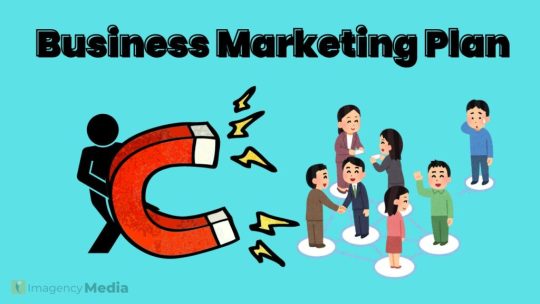
In the bustling world of e-commerce, standing out can be both a challenge and an opportunity for small businesses. Crafting a well-rounded marketing plan is essential to gaining visibility, driving sales, and building a loyal customer base. Whether you're just starting out or looking to refine your existing strategies, a structured marketing plan can set the foundation for success. Here’s a comprehensive guide to developing a marketing plan tailored for a small e-commerce business.
Understand Your Market and Audience Before diving into marketing tactics, it's crucial to have a deep understanding of your market and target audience. Conduct market research to identify your ideal customers, their needs, preferences, and shopping behaviors. Use surveys, interviews, and social media insights to gather data. Analyze your competitors to understand their strengths, weaknesses, and the market gaps you can exploit. Key Questions to Answer: Who are your ideal customers? What are their pain points and needs? How do they prefer to shop online? What are your competitors doing well, and where are their shortcomings?
Define Your Unique Value Proposition (UVP) Your Unique Value Proposition (UVP) differentiates your business from competitors. It should clearly articulate why customers should choose your products or services over others. Your UVP should focus on the unique benefits and features of your offerings, such as superior quality, exceptional customer service, or exclusive products. Steps to Develop a UVP: Identify what makes your products or services unique. Highlight benefits that resonate with your target audience. Communicate your UVP clearly across all marketing channels.
Set Clear Marketing Objectives Setting clear and measurable marketing objectives is essential for tracking progress and ensuring that your efforts align with your business goals. Objectives might include increasing website traffic, boosting conversion rates, or growing your social media following. SMART Objectives: Specific: Clearly define what you want to achieve. Measurable: Ensure you can track progress (e.g., increase website traffic by 30%). Achievable: Set realistic goals based on your resources. Relevant: Align objectives with broader business goals. Time-bound: Set a timeline for achieving each objective.
Choose Your Marketing Channels Selecting the right marketing channels depends on where your target audience spends their time. A mix of channels often works best, but it's essential to focus on those that will yield the highest returns. Key Channels to Consider: Social Media: Platforms like Facebook, Instagram, and Pinterest are excellent for brand building and driving traffic. Tailor your content to each platform’s audience and features. Email Marketing: Build and nurture an email list with personalized and targeted campaigns. Regular newsletters, promotional offers, and abandoned cart reminders can drive sales and customer retention. Content Marketing: Create valuable content such as blog posts, videos, and infographics that address your audience’s pain points and interests. Quality content can drive organic traffic and establish your brand as an industry authority. Search Engine Optimization (SEO): Optimize your website and content for search engines to increase organic traffic. Focus on relevant keywords, high-quality content, and a user-friendly website structure. Paid Advertising: Invest in pay-per-click (PPC) campaigns on Google Ads or social media ads to drive targeted traffic. Utilize retargeting strategies to convert previous visitors into customers.
Develop a Content Strategy A well-planned content strategy helps in creating engaging and relevant content that attracts and retains your target audience. Your content should align with your brand’s voice and address the needs and interests of your audience. Content Strategy Components: Content Calendar: Plan your content in advance to ensure consistency. Include blog posts, social media updates, email campaigns, and other content types. Content Types: Diversify your content with articles, videos, infographics, and user-generated content. Engagement: Encourage interaction through comments, shares, and feedback. Respond to customer inquiries and engage with your audience to build relationships.
Leverage Analytics and Track Performance Monitoring and analyzing your marketing efforts is crucial for understanding what works and what needs adjustment. Use analytics tools to track key performance indicators (KPIs) such as website traffic, conversion rates, and customer acquisition costs. Analytics Tools: Google Analytics: Track website traffic, user behavior, and conversion rates. Social Media Insights: Analyze engagement metrics on social media platforms. Email Marketing Metrics: Monitor open rates, click-through rates, and conversion rates from email campaigns. Regularly review your performance data, compare it against your objectives, and adjust your strategies accordingly. Continuous optimization based on data insights will help you stay competitive and achieve better results.
Budget Wisely A well-defined budget ensures that you allocate resources effectively across different marketing channels. Determine how much you can invest in each area and prioritize spending based on potential return on investment (ROI). Budgeting Tips: Allocate Funds: Distribute your budget across channels that align with your goals and audience. Track Spending: Monitor your expenses to avoid overspending and ensure efficient use of resources. Adjust as Needed: Be flexible and adjust your budget based on performance and changing priorities.
Build Strong Customer Relationships Customer retention is as important as acquiring new customers. Focus on building strong relationships through excellent customer service, personalized experiences, and loyalty programs. Retention Strategies: Personalization: Tailor recommendations and communications based on customer behavior and preferences. Loyalty Programs: Reward repeat customers with discounts, points, or exclusive offers. Customer Feedback: Encourage and act on customer feedback to improve your products and services.
Adapt and Innovate The e-commerce landscape is constantly evolving, and so should your marketing strategies. Stay informed about industry trends, new technologies, and changing customer preferences. Be prepared to adapt and innovate to remain competitive and meet your customers’ evolving needs. Staying Ahead: Industry Trends: Follow industry news and trends to stay updated. Emerging Technologies: Explore new technologies and tools that can enhance your marketing efforts. Customer Feedback: Continuously gather and act on customer feedback to improve your offerings. Conclusion Developing a comprehensive marketing plan for your small e-commerce business involves understanding your market, defining your UVP, setting clear objectives, and choosing the right channels. By creating a strategic content plan, leveraging analytics, budgeting wisely, and focusing on customer relationships, you can drive growth and achieve success. Remember, a successful marketing plan is dynamic and should evolve based on performance and market changes. Embrace innovation and stay adaptable to build a thriving e-commerce business.
2 notes
·
View notes
Text

Digital Marketing Career Opportunities in India.
The increase of digital technology in the existing environment has resulted in shifts in business operations, and India is certainly not going to be left behind. As more companies realize the relevance of being present on the web, the demand for digital marketing professionals has increased significantly. For those who are aiming to make a career in this domain, digital marketing in India is an arena of opportunities. This article will talk about the Opportunities & Challenges of Digital Marketing in India, different career options, potential growth, and the skills needed to play a major role in this fast-growing industry.

Booming of Digital Marketing in India.
The fast growth of the internet in India, the increasing usage of smartphones, and the growing e-commerce industry have led to an increased demand for digital marketing. By 2024, more than 750 million people in India will be internet users, making it one of the largest digital populations in the world. Both big and small companies are very keen to get a slice of this giant online pie, thus digital marketers are in high demand.
Factors:
Shift from Traditional to Digital Media: An increasing number of businesses are moving their advertising spending from traditional media (like TV or print) to online channels like Google, Facebook, and Instagram.
Startup Boom: India’s startup ecosystem is thriving, and every new company needs effective digital marketing to scale its business.
Government Initiatives: Digital India and the growing focus on the digital world have boosted the demand for digital marketing professionals.
Opportunities & Challenges of Digital Marketing in India.
Opportunities in digital marketing in India:
1. Expanding Internet Users:
India has one of the fastest-growing internet users, with over 750 million users in 2024, and the number will continue rising. This provides a vast audience for businesses to tap into digital marketing to reach that audience.
2. Growth of Social Media:
Social media platforms like X, Instagram, Facebook, LinkedIn, and YouTube, have become essential tools for businesses to engage with their audiences, with millions of users. Businesses can post creatives post, build brand awareness, and create engaging content to grow more and reach new customers.
3. Target Audience:
One of the key advantages of digital marketing is to create highly target-oriented campaigns.
With data-driven marketing strategies, businesses can analyze user behavior and preferences, which will help them target and offer specific costumes.
Challenges in digital marketing in India:
1. High Competition:
As the benefits of digital marketing are more widely recognized, businesses across all industries are now investing in online marketing to grow more in this digital age, this has resulted in more competition in online marketing, making it more difficult for small businesses to stand out in the high competition market.
2. Multiple Channels:
Digital marketing comes up with a wide range of channels, Like Social media, Email Marketing, SEO (Search Engine Optimization), PPC (Pay-per-click), and Content Marketing. Managing multiple channels will result in more Opportunities. But it also comes with multiple challenges to manage.
3. Skill Shortage:
Rapidly increasing digital marketing in India, there is a shortage of professionals in the industry. Many businesses face challenges in hiring an experienced digital marketer, especially small firms, who have the expertise to run successful campaigns.
How To Get Started In Digital Marketing
If you are interested in starting your career in the world of digital marketing, here are a few steps guide to start.
1. Enroll in Digital Marketing Course:
There are several institutes where they provide full courses of digital marketing. Like AADME and Coursera these are my preferred options.
2. Build Portfolio:
Start a blog, manage a social media account, or run a small campaign to get on hand experience.
3. Stay Updated:
Digital marketing trends change frequently, you can follow some blog pages to stay updated.
4. Certifications:
Earning a certification in Google Analytics, Facebook ads, or SEO tools, will help to boost your credibility.
Scope Of Digital Marketing In India.
Job Demand:
According to the reports, India needs 2 million digital marketers by 2025. With the rise of businesses and startups, companies are actively searching for professional digital marketers who can create and handle campaigns.
Salary / Packages:
The salary in Digital marketing varies on the experience and specialization:
- Entry Level Positions: ₹3-5 LPA
- Mid-Level Positions: ₹8-12 LPA
- Senior Level Positions: ₹15-30 LPA
Click Here To Know More About The Challenges And Opportunities of Digital Marketing In India.
2 notes
·
View notes
Text
10 Game-Changing AI Tools Every Affiliate Marketer Needs to Dominate 2024

Affiliate marketing is evolving rapidly, and in 2024, AI tools are playing a pivotal role in shaping the industry. These tools are not just about efficiency—they’re about driving conversions, optimizing strategies, and significantly increasing your revenue.
Here are 10 game-changing AI tools that every affiliate marketer needs to dominate the market this year.
Unlock Your Affiliate Marketing Success!
Ready to boost your income? Grab my guide, "Affiliate Marketing Secret Formula," and discover the strategies top marketers use to dominate their niches. Learn how to find high-converting offers, leverage AI tools, and build a profitable affiliate business.
Get your copy now and start your journey to financial freedom
1. Seowriting.ai
Seowriting.ai is an AI-powered content creation tool designed to help affiliate marketers produce SEO-optimized content quickly and effectively. It streamlines the process of keyword research, content structuring, and readability enhancement, ensuring that your content ranks high and engages readers.
Why It’s a Game-Changer:
Automates keyword research and content optimization
Enhances readability and engagement
Improves content ranking potential
2. Jasper (Formerly Jarvis)
Jasper is an AI-powered writing assistant that aids in creating high-quality content tailored to your audience. It’s particularly useful for generating blog posts, product descriptions, and email campaigns that are both engaging and SEO-friendly.
Why It’s a Game-Changer:
Saves time on content creation
Ensures SEO-friendly copy
Customizable for different niches
3. VidIQ

VidIQ is an essential tool for affiliate marketers who leverage video content. It offers data-driven insights to optimize your YouTube videos, helping you rank higher and attract more viewers. VidIQ also provides competitive analysis and performance tracking to fine-tune your video marketing strategy.
Why It’s a Game-Changer:
Optimizes YouTube videos for better visibility
Provides competitive analysis
Tracks video performance and offers insights
4. Surfer SEO
Surfer SEO combines AI with data-driven insights to optimize your content for search engines. It provides real-time recommendations to help you out-rank competitors by improving on-page SEO.
Why It’s a Game-Changer:
Enhances on-page SEO
Provides actionable insights
Helps in outperforming competitors
Unlock Your Affiliate Marketing Success!
Ready to boost your income? Grab my guide, "Affiliate Marketing Secret Formula," and discover the strategies top marketers use to dominate their niches. Learn how to find high-converting offers, leverage AI tools, and build a profitable affiliate business.
Get your copy now and start your journey to financial freedom
5. ConvertKit
ConvertKit is an AI-driven email marketing platform that automates your campaigns, segments your audience, and personalizes your messaging to increase engagement and conversions.
Why It’s a Game-Changer:
Automates email sequences
Personalizes marketing efforts
Increases conversion rates
6. AdCreative.ai
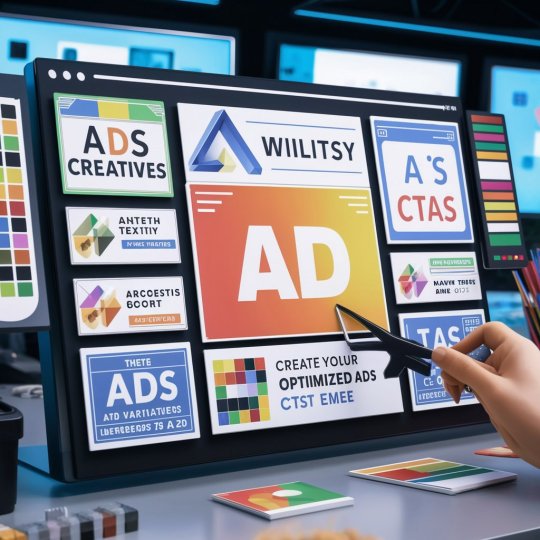
AdCreative.ai uses AI to generate high-converting ad creatives for your affiliate campaigns. It’s perfect for marketers running ads on platforms like Facebook or Google, ensuring your creatives are optimized for performance.
Why It’s a Game-Changer:
Generates high-quality ad creatives
Boosts click-through rates (CTR)
Saves time on ad design
7. HubSpot CRM
HubSpot CRM uses AI to provide a comprehensive view of your customer interactions. It helps affiliate marketers track leads, manage relationships, and automate sales tasks, streamlining marketing efforts.
Why It’s a Game-Changer:
Automates customer relationship management
Improves lead tracking
Streamlines sales processes
8. Grammarly
Grammarly enhances your writing’s clarity, engagement, and readability. For affiliate marketers, this means producing polished, professional content that connects with your audience.
Why It’s a Game-Changer:
Improves content quality
Ensures clear and engaging copy
Enhances readability for better user experience
9. Ahrefs

Ahrefs is a powerful SEO tool that provides in-depth data on keyword rankings, backlinks, and competitor analysis. It’s indispensable for affiliate marketers looking to identify profitable keywords and outmaneuver the competition.
Why It’s a Game-Changer:
In-depth keyword research
Competitor analysis
Backlink tracking and analysis
10. Zapier
Zapier uses AI to automate workflows between different apps, allowing you to streamline repetitive tasks. It’s particularly useful for integrating multiple tools and automating your affiliate marketing processes.
Why It’s a Game-Changer:
Automates workflows
Integrates with hundreds of apps
Saves time on repetitive tasks
How AI Tools Are Revolutionizing Affiliate Marketing
AI tools in affiliate marketing are transforming the way we work by automating tasks, optimizing content, and enhancing customer interactions. The key to staying ahead in 2024 is to leverage these tools effectively.
Key Benefits of Using AI Tools:
Increased Efficiency: Automating repetitive tasks frees up time for strategic planning.
Enhanced Content Creation: AI-driven tools ensure your content is optimized and engaging.
Better Decision-Making: Data-driven insights help you make informed decisions that drive results.
Improved Customer Engagement: AI tools like chatbots and personalized email marketing increase customer satisfaction and loyalty.
Unlock Your Affiliate Marketing Success!
Ready to boost your income? Grab my guide, "Affiliate Marketing Secret Formula," and discover the strategies top marketers use to dominate their niches. Learn how to find high-converting offers, leverage AI tools, and build a profitable affiliate business.
Get your copy now and start your journey to financial freedom
Conclusion
The adoption of AI tools will be critical for affiliate marketers looking to succeed in 2024. The tools listed above, including Seowriting.ai and VidIQ, offer powerful features that can significantly enhance your marketing efforts. By integrating these technologies into your strategy, you can boost your efficiency, improve your content, and ultimately, dominate the affiliate marketing space this year.
Final Tip:
Start by integrating the AI tools that align most closely with your current needs. Gradually incorporate more tools as you grow, and continuously measure their effectiveness to optimize your strategy.
#affiliate marketing guide#affiliate marketing#affiliate promotion#affiliate products#passive income#ai#ai marketing tools#ai marketing platform
2 notes
·
View notes
Text
A Complete Guide to Google Ads Campaign Management, Paid Search Strategies, and Meta (Facebook) Ads
In today’s digital landscape, businesses rely heavily on online advertising to reach potential customers. Three powerful tools that can drive traffic, generate leads, and boost sales are Google Ads campaign management, paid search strategies, and Meta ads (Facebook ads). These platforms offer unique ways to engage with your audience and grow your business. In this guide, we will explore each of these in detail, offering simple, easy-to-follow strategies to help you succeed in your online marketing efforts.
#google adwords#google analytics#google ads#google search#paid search#meta analysis#meta ads#digital marketing#seo services#seo company#seo agency#seo marketing#emailmarketing#search engine optimization#marketing strategy#facebook marketing#facebook pages#facebook advertising#facebook ads#facebook ad campaign
2 notes
·
View notes
Text
E-Commerce Marketing: Strategies and Techniques for Success best shoes for plantar fasciitis women
Best shoes for plantar fasciitis women e-trade advertising is the spine of online retail achievement. It incorporates a wide range of strategies and strategies aimed toward driving traffic, increasing conversions, and building long-time period purchaser relationships. As the virtual marketplace turns into increasingly aggressive, know-how and implementing effective e-commerce marketing techniques is critical for thriving in this dynamic surroundings.


Understanding Your Audience
red leather couch with chaise lounge effective e-trade advertising starts with a deep expertise of your target audience. This includes developing targeted customer personas that include demographic information, shopping for conduct, pastimes, and ache points. Tools like Google Analytics, purchaser surveys, and social media insights can offer precious records about your target market. By knowledge your clients’ wishes and possibilities, you could tailor your marketing efforts to cope with their particular goals and demanding situations.
Search Engine Optimization (SEO)
Search engine optimization is a vital element of e-commerce marketing. It includes optimizing your online keep to rank better in search engine consequences pages (SERPs) for applicable key phrases. Key components of e-trade search engine optimization encompass
Keyword Research
Identifying keywords that ability customers use while looking for merchandise similar to yours. Tools like SEMrush and Ahrefs can help in locating high-value key phrases.
On-Page SEO
Optimizing product pages with relevant keywords in titles, meta descriptions, headers, and product descriptions. High-great, attractive content material is critical for both users and serps.
Technical SEO
Ensuring that your website’s technical components, along with website velocity, cell-friendliness, and steady connections (HTTPS), are optimized. Search engines prioritize fast-loading, steady, and cell-optimized websites.
Backlink Building
Acquiring incredible back-links from legitimate sites can decorate your website’s authority and enhance its ranking in seek outcomes.
Content Marketing
Content Marketing is an effective manner to have interaction capability customers and build emblem authority. Types of content which could pressure visitors and conversions encompass
Blog Posts:
Writing informative and tasty weblog posts associated with your merchandise or enterprise can appeal to and hold customers. Topics may include product critiques, how-to guides, or industry information.
Videos:
Creating product demonstrations, tutorials, or at the back of-the-scenes content material can beautify purchaser engagement. Video content frequently performs nicely on social media systems and may increase conversion prices.
Infographics
Visual content like infographics can simplify complicated records and make it greater shareable. They are mainly useful for illustrating product features, comparisons, or industry data.
User-Generated Content
Encouraging customers to create and percentage content associated with your merchandise can construct agree with and offer social evidence. This can include evaluations, testimonials, or social media posts proposing your merchandise.
Social Media Marketing
Social media marketing systems are effective tools for e-commerce advertising. They provide opportunities to reach and engage together with your target market in a more personal and interactive way. Effective social media advertising techniques consist of:
Platform Selection
Choose the right structures based totally on where your audience is most lively. Popular alternatives encompass Facebook, Instagram, Pinterest, and TikTok.
Content Strategy
Develop a content calendar that consists of a combination of promotional posts, enticing content, and consumer-generated content. Use wonderful visuals and compelling replica to seize interest.
Advertising
Social media advertising and marketing allows you to target particular demographics, interests, and behaviors. Platforms like Facebook and Instagram provide advanced targeting alternatives to reach ability customers effectively.
Engagement
Actively have interaction with your audience via responding to feedback, messages, and opinions. Building a network round your brand can foster purchaser loyalty and increase emblem advocacy.
Email Marketing
Email advertising remains one of the simplest channels for driving conversions and maintaining client relationships. Key electronic mail advertising techniques encompass:
Segmentation
Divide your e-mail list into segments based on factors like buy history, browsing conduct, or demographic records. This permits you to ship customized and relevant content to different corporations.
Automation
Implement computerized e mail campaigns for moves along with abandoned cart reminders, publish-buy comply with-ups, and personalised product tips. Automation facilitates nurture leads and encourages repeat purchases.
Content
Create enticing and precious content material on your e-mail subscribers. This ought to encompass distinctive discounts, product updates, or academic content material. Ensure your emails have a clear call-to-movement (CTA) that drives recipients on your website.
Testing and Optimization
Continuously check distinct factors of your email campaigns, which includes difficulty lines, content, and sending instances. Use analytics to track open costs, click-through fees, and conversions to optimize your campaigns.
Paid Advertising
Paid Advertising can supplement your natural advertising and marketing efforts and power targeted site visitors to your e-commerce web site. Key types of paid advertising encompass
Pay-Per-Click
Platforms like Google Ads permit you to bid on keywords and show commercials in seek effects. PPC advertisements can pressure immediately site visitors on your site, and effective key-word focused on is vital for maximizing ROI.
Display Ads
Display advertisements appear on websites and apps throughout the internet. They can assist increase emblem consciousness and retarget site visitors who have formerly interacted together with your web site.
Social Media Ads
Social media platforms offer various ad formats, consisting of backed posts, stories, and carousel commercials. These commercials may be enormously targeted primarily based on user pastimes, behaviors, and demographics.
Influencer Marketing
Influencer marketing involves partnering with individuals who have a large following on social media or different digital systems. Influencers can help sell your products to their target audience thru true endorsements. To leverage influencer advertising correctly:
Identify the Right Influencers
Choose influencers whose followers align with your target audience. Consider factors like engagement rates, content style, and authenticity
.Collaborate on Content:
Work with influencers to create engaging content that showcases your products in a natural and relatable way. This could include sponsored posts, reviews, or unboxing videos.
Measure Impact:
Track the performance of influencer campaigns by monitoring metrics such as referral traffic, engagement, and conversions. Use this data to assess the effectiveness of your partnerships.
Data Analytics and Insights
Data analytics is essential for measuring the fulfillment of your e-commerce advertising and marketing efforts and making data-pushed decisions. Key metrics to display include
Website Traffic
Analyze site visitors resources, user conduct, and conversion paths to recognize how visitors have interaction together with your web page.
Conversion Rates:
Track the proportion of traffic who complete a preferred motion, which include making a buy or signing up for a publication.
Customer Acquisition Cost
Measure the fee of acquiring a new consumer thru diverse advertising channels. This helps check the performance of your advertising spend.
Return on Investment (ROI)
Lightweight travel backpack for women calculate the ROI of your advertising campaigns to determine their effectiveness and make knowledgeable price range choices.
#Lightweight travel backpack for women#red leather couch with chaise lounge#Best shoes for plantar fasciitis women
2 notes
·
View notes